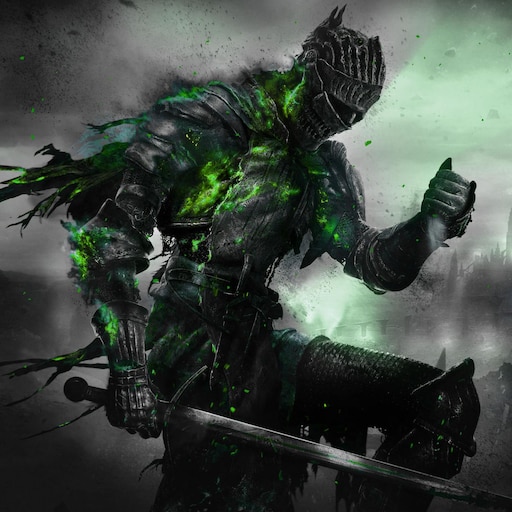So i have a gaming desktop that not the best or the newest. What takes up most of my drive space is games, updates, and software’s. Im wondering if i should switch to linux and if linux will improve any performance for my main machine? If you believe i should switch what os should i go with or why or why not should i switch?
I mostly game and do mess with ollama/ai tools because i think that’s cool. I want to do more things in the future but that might beyond my drive space?
What would you advise?
Given that Windows 11 won’t support your device, Linux may be your only option for a supported OS.
You can use Microsoft Activation Scripts (MAS) to activate Extended Security Updates for extra 3 years of support or upgrade to IoT LTSC for 6 years
Meh. That assumes that games and applications bother still supporting it when EoL for most people has passed. Good option, though.
Linux will continue to support their hardware for easily another decade.
Linux probably wouldn’t make your games any faster, but it could make the OS feel snappier.
Reasons to switch:
- you hate Windows
- you like to customize stuff
- you’re curious about Linux
- you don’t play many MP games
- you tend to leave a ton of stuff open, which makes things run slowly
- saving 40GB or so of space means the world to you (Linux is pretty lean)
Reasons not to switch:
- you need Windows-specific software, like Adobe stuff or games w/ anti-cheat
- you’re not interested in tinkering at all, and having any minor issue would frustrate you
- you want the best possible performance for games
Linux is better at memory and task management, generally speaking, but performance in specific apps depends a ton on the specific app, from being slightly better to being noticeable worse.
As for which Linux distro to go with, I hear good things about Linux Mint, though I don’t use it myself. But honestly, look at the most popular distros and find one that looks cool to you, they’re all pretty good. Ones to check out are:
- Debian (or Linux Mint Debian Edition) - ol’ reliable, may have some issues on newer games
- Fedora - tries to be close to bleeding edge, without as many sharp edges
- Bazzite - gaming focus, tries to imitate Steam OS
- openSUSE Tumbleweed - my personal daily driver, though I generally don’t recommend it for new users since there’s not a huge community to find help
There are tons more great ones. If you list your must-have apps/games, maybe someone can give a better recommendation, though honestly most distros are similar enough that if it works on one, it’ll work anywhere.
Just a point about phrasing but pretty much all MP games work flawlessly, just not the esports titles with draconian anticheats.
Sure, my point is anti-cheat, which is a pretty common feature of MP games, at least the popular ones. But yeah, I could’ve been more clear, thanks for the correction.
Debian (or Linux Mint Debian Edition) - ol’ reliable, may have some issues on newer games
Used to, in the first year after Steam Linux client released, because of old libc. But since then, I’ve had only one or two games not work because of nvidia drivers not being new enough.
Yes, from my personal experience:

It’ll be a lot faster.
Edit: there’s ollama-cuda on the repos and alpaca-ai on the AUR, but I changed from the self managed to use the local ollama server. For games, there’s lutris, wine-cachyos, proton-cachyos, dxvk-mingw-git and vkd3d-proton-mingw-git all on the repos, so dxvk and vkd3d (the translation layers from directx to vulkan) are updated when the system is updated, but need to be installed with the provided scripts to work automagically after that.
Just dual boot. Boot in to Linux only for a week or two, if it’s working for your needs keep it. If not, delete the partition and it’s like nothing ever happened.
I wouldn’t even go that far. Boot to a live USB of a distro you want to try.
That often doesn’t give you the actual feeling of using it as a daily driver.
Just dual boot.
They’d “just” have to do a lot of potentially hazardous work for a beginner, shrinking their Windows partition to make room for another partition.
Nah, VM is the way. Try it out, see what flies.
Dual boot is the way.
Microsoft/Windows has a habit of messing up for Linux in despite being on separate partitions. I’ve experienced:
- overwrite existing grub
- write its boot sector on a disk it didn’t identify (was part of a software raid setup… So that was fun)
- acquire a lock on devices and not release it even when restarting, so on Linux the “WiFi adapter suddenly doesn’t work”. -… Probably more.
IMO, try out a live USB. Dual boot if you want. But as soon as you can, ditch windows entirely.
Setting a BIOS password is one of the best pieces of advice I’ve read on Lemmy. Once you set that password, Windows shouldn’t be able to overwrite grub. That doesn’t help with devices and storage locks but that removed the biggest frustration for me.
You can bypass the TPM requirements for windows using Rufus to get Windows 11. There are tons of videos on how to do that.
That being said, I use Linux as a daily driver and love it. You can always test it out on a USB and decide if you want to install it. It won’t run games well from a USB, but it at least will allow you to see what you like.
Either way good luck with your adventure and if you have questions this community is spectacular and really likes to help people!
My biggest problem right now it picking a linux destitution or os. There’s so many how do i choose?
Also if anyone is wondering this machine is a overpriced prebuild i got because my parents forced me to pick a prebuild instead of building a pc.
A lot of folks will recommend Mint as the first option, since it’s pretty straightforward and will feel a lot like older editions of Windows. Personally, I use Fedora Plasma, because it feels like what Windows 11 should have been, and it supports just about everything I’ve thrown at it. It’s got pretty broad support, so it’s easy to get into.
And there’s the issue. Guy is confused, and everyone is recommending him ten thousand distros. We need to understand that not everyone understands half of what we talk about more than half the time.
OP: just get mint, try it out, make a thread again in a couple months if you need help choosing another distro.
Choosing a distro is both very easy and very hard. The easy answer is go with the flow, look for what the most popular distros are and see what appeals from those. A common distro will have lots of other people with the possibility of having the same issues you have finding solutions. It makes troubleshooting way easier and is worth the distro not being perfect if you can get more support.
The hard answer is don’t choose a distro. Try distros. Maybe before killing your Windows install get VirtualBox and install various distros in VMs and try them out. Performance is fairly good in a VM so you can get a realistic idea if how it will work for you in terms of how intuitive it is to find things, how the workflow is, and whether it is too opinionated about how things are done.
For example, Ubuntu has a little less ability to control things at a deep level, but it is more supportable because everyone using it either does or does not have a given problem.
At the other end is something like Arch which is more of a base than a distro. You choose your desktop environment, what services you want, all the back ends, and you have to configure it yourself.
I would recommend EndeavourOS as a great Arch based distro.
I’m using Nobara and Fedora. I think Mint is the most popular.
Check out distrowatch.com it explains it well.
Linux takes like 5-10mins to setup. You can dedicate your first day/week to trying out a few different flavors to see which one you like.
I’d try distro’s in this order Mint with Cinnamon > fedora KDE > Ubuntu Gnome > cachyOS if you’re a baller > Arch if you want to learn and break things while doing it > NixOS if you absolutely hate having things work easily and learning transferable knowledge.
NixOS if you absolutely hate having things work easily and learning transferrable knowledge.
Ouch. Accurate, but ouch. 😄
I only roast NixOS from a place of love.
In the past certain distros were better for certain tasks, but not really anymore. The thing that separates distros is how they do package management and how many packages they have. All that’s to say, just pick something easy to start with like Kubuntu, Mint, or Debian if you’re ok with older software.
Yeah but for a new user its nice to see how different groups configure linux out of the box. Once you know what you’re doing you can tweak the distro to your liking but new users seem to search for a default they like and stick with it until comfortable.
All that matters is that you pick something popular enough that you can easily Google any issues that might arise.
The big ones for general use are Ubuntu and Fedora. KDE is gonna feel most windows like on any distro.
If you want something security focused there’s quebesOS that breaks everything out into VMs. For gaming there’s bazzite which is just modified fedora and several other gaming spins like steamOS.
Bazzite isn’t just modified Fedora, it’s based on Fedora Atomics, like Silverblue and Kinoite. If OP isn’t even sure about which distro to use, tossing them into the world of
ostreemight be a little much, since a lot of the online advice doesn’t take immutable systems into account. The Discord community they have is helpful, though, and there’s more than a few users here on Lemmy who use it, who I’m sure would be willing to help.Nobara is just modified Fedora, however, and it’s also nice.
Just pick something. They are all free (nearly all of them), so you can always install something else pretty easily. Spend some time to get your feet wet and get the lay of the land. After a week or two, you’ll probably have a really good direction on what you actually want. You can also run them as live oses, so download a few with different Desktop Environments you think are interesting and test them out. Then install one.
I’m still going to ask how you ended up with a server CPU. Does it help with the tasks you do?
Do you have HDR monitors? If you do and care about having the HDR part working, you’ll likely want to pick one that uses KDE Plasma for the desktop environment.
There’s a lot of good suggestions here and I wanted to add pop os! it’s a beginner friendly Linux distribution but with more of a focus on gaming.
Pop is great, but I wouldn’t currently recommend it, since they’re putting 99.9% of their effort into Cosmic. I have heard longtime users mention how certain packages and updates are behind, and while they’re willing to wait, I wouldn’t want to put that upon somebody new.
Not a bad recommendation in general, but just my two cents about the current state of things.
That’s a really good point and I had forgotten about the updates being behind. Thank you for bringing that up!
Lots of mention of dual booting- I recommend getting an e-waste tier 256gb SATA SSD for your first Linux install if you just want to try it out.
No one wants those old drives because they are small but they are plenty quick and you only need 15 to 30 gigs for most distros.
I second this. Chances are high that OP ends up reinstalling multiple times (either to check out multiple distros or after they accidentally nuked the system). Doing so on a separate SSD so they don’t accidentally wipe their data during reinstall and so they don’t have to constantly migrate data is a good plan.
Third this move. Nvme are under $20 cheap way to experiment
Everyone manages to format the wrong partition at least once when starting out with installing different Linux distros.
I haven’t. That wasn’t one of the mistakes I made!
Lucky you!
Can you use the existing Windows partition for the games though (without it fucking them up)? Because while Linux fits in that easily, games do not.
Linux has NTFS drivers. Should work fine.
Probably not, just trying to save the guy a few bucks. Try some games one at a time that do fit, and rely on protondb for the ones that don’t. Then decide to move over and wipe windows.
I picked up a Samsung m.2 280 or 260 gb guy on eBay for like ten bucks. I don’t remember the size exactly, just that it wasn’t the normal binary 256gb.
They sell 250 on 256 and 500 on 512, holding back the 6/12 gigs for wear leveling and other NAND management functions. At least that’s what I understand.
Just looked it up and it was 240gb, and made by pny. My b.
64 GB DDR3, interesting. That’s a lot for that old tech.
It’s a Xeon, workstation and server CPU, so made to take a lot of RAM, 4 memory channels.
Still a lot for that old tech and a desktop gaming computer.
For a server, it’s not a lot.
Yeah but why wouldn’t you when sticks are so cheap now? I have an E5-2680v2 and 32GB of RAM. I can have SO many browser tabs open, and games actually run quicker because Linux does a really good job of using excess RAM as file cache. If a game accesses a texture more than once it almost always ends up in cache. I probably will upgrade to 64GB at some point, because I’ve got two 16GB sticks so only using half the memory channels. Wanna get an E5-2697v2 first though, much better single core performance.
I’m not saying you shouldn’t. I have 64 GB of DDR5. 🤷♂️
I was just reacting to the fact that 64 GB is unusually much for DDR3, since DDR3 is quite old and people usually didn’t have that much RAM back in those days.
I reiterate: I’m not saying it’s a bad thing. Add as much RAM as you like. Who cares.
Well, yeah, but seen as it’s old now it’s dirt cheap, so anyone still running it is gonna have a lot just because they can. It’s not like those old computers aren’t upgradeable lol
There’s no “but”. 🙂 I’m not disagreeing. I was just reacting.
It’s like seeing a whole heap of fossils in one place. It’s super cool and a neat find, but you react because it’s a lot.
I know computers are upgradeable.
Fair fair :)
Doesn’t the E5 2690 support up to 512GiB LRDIMM? Pretty sure my 2697v2 do.
🤷♂️
Note how the 3060 already had 12GB VRAM, and they still try to push 8 today
Your biggest issue is going to be dealing with multiple partitions, unless you can find another boot disk, because your disk is pretty full. I would strongly recommend getting a second disk, unless you are willing to delete a lot of (presumably) game executables.
It is also a good idea to have a relatively smaller Linux partition, and point your Steam library and other documents to a separate data partition. My 1TB nvme has 150MB EFI FAT32 partition, a 100GB ext4 root partition (Linux is installed here), and the remaining ~900GB as my ext4 data partition. This way, if you choose to install a different Linux, or blow away your root partition, you can relink your Steam/Music/Video Libraries and local AI models, and get up and running again very quickly.
Outside of the disk, my top recommendation is to archive your active steam games, so you can restore them into Linux without fully re-downloading later. Additionally, unless your games are in Steam Cloud, you will also have a bit of a time restoring save files to the new OS, as the file paths will be different than you are used to on Windows.
My second recommendation is to ensure secure boot is disabled in your BIOS; there are currently known issues with driver signing with the NVIDIA driver.
Finally, assuming you’re on a Ubuntu-based distro like Mint, ensure you install Steam from the .deb or apt package, not the flatpak. On Mint, “Install Steam” is available right in the start menu.
I feel like if you’re asking on this community, you’ve already decided you want to switch and you want help being reassured that it’s viable
Try it! You can always go back.
If you can find another HDD or SSD then you can keep your windows drive full of games intact.
I dual booted for years (for gaming) and as of now haven’t used a non-linux PC for more than a decade at home or professionally.
I recommend starting with either Fedora or Ubuntu as they’re among the most popular and have a large community for support.
Set yourself a goal on Linux, even if it’s just “check my email” or whatever. Rinse, repeat.
- Load onto USB thumb drive and boot into it to see if you like the outline feel. Try different ones (Debian is good)
- Dual boot If you like outline feel from USB drive
- Give it a month as your daily driver
- Consider the Chris Titus option of thinned down windows.
I’m using Debian on my machine and it just works.
Mint is better IMHO, it’s based on Ubuntu which is in turn based on Debian, but includes quality of life improvements and newer packages. Debian is nice for servers, but I would get something that is stable but still has faster updates for my desktop
The answer: Yes!
The why: Why not?
A xeon plus 3060 is an interesting combo…
He probably slapped the GPU onto a workstation.
Of course you should.











